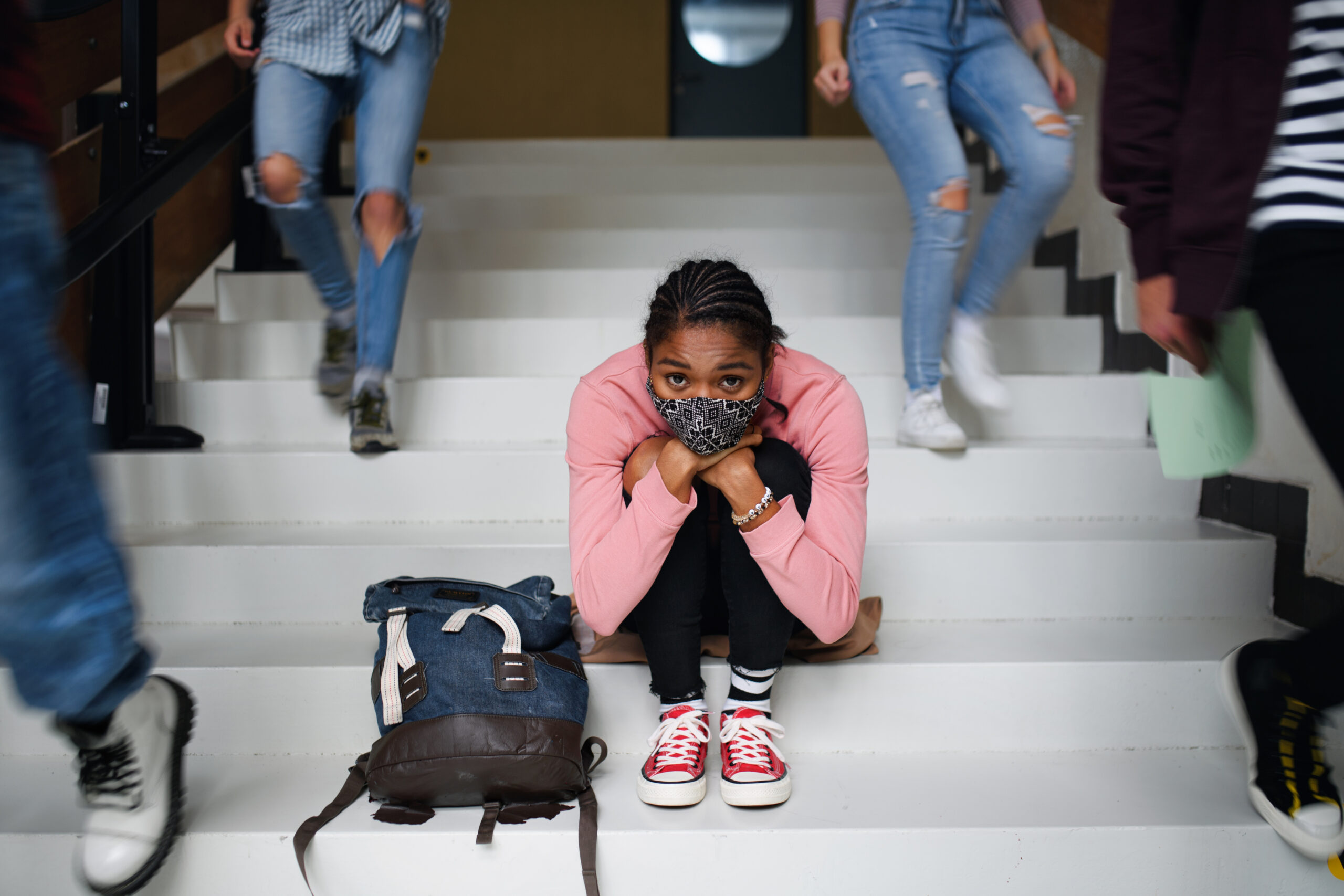The fear of being forced to socialize after nearly two years of at home learning is more frightening than the pandemic regardless of mitigating procedures. Image by Halfpoint on iStock.
By Lloyd Bravo.
After nearly two years, the inevitable has happened–students are returning to the California State University, Dominguez Hills campus. This was not a day that I have been fully prepared for as I began to feel anxious and restless a week before our return to in-person learning. Although COVID-19 changed the structure of my education, being at home while attending classes virtually has been more beneficial to myself over the past two years. Regardless, I do understand that every student is different and we learn at different rates, but online courses gave me the opportunity to be less stressed and more attentive.
I felt comfortable not having to commute, which gave me ample time to focus on other priorities within my life like taking care of my son. However, this temporary arrangement has now ended and, despite the fear of a very real pandemic that many are “over,” my new found sense of normalcy of an at home substitute has ended without the recognition of the beneficial effects it may have had on socially recluse individuals like myself.
The continued surge in cases due to the Omicron variant in the past few months has kept my mental state fragile. The overwhelming anxiety and tension that I feel in my chest have not subsided, especially with the looming fear of contracting the disease and spreading it throughout my family. The rigors of a 40-hour work week, being a full-time student, becoming a parent, and the global pandemic have accumulated to a tremendous amount of pressure that has encapsulated into a stress conducive life.
My solace comes from the ability to work from home and away from the chaotic conditions that have plagued our society. I have never been on campus, as I entered the last semester before earning my Bachelor’s Degree in Journalism, but my success away from social interactions may not be typical.
Students and colleagues have expressed their eagerness to return to in-person classes, however, I am not ready to assimilate and pretend that everything is okay. I would welcome an option to resume online courses for the benefit of my physical and mental health, but unfortunately, there is only one option available at CSUDH–try not to get sick. I can appreciate the effort CSUDH is taking to prevent mass infections throughout campus, but I have a hard time relying on other individuals to take the same precautions I have made during these trying times.
During a seven-minute video addressing the issue, CSUDH President Thomas A. Parham speaks about the abundance of caution the university is making in order to keep students and faculty safe from the infectious disease by following the directives from science officials and hospitalization rates in the county. However, the presentation uploaded on the CSUDH YouTube account and CSUDH.com feels like a legal omission that the campus is taking in order to deflect blame in the case someone contracts the disease while participating in face-to-face mandated tutelage.
As reported by The Bulletin, over 3,500 students have signed a petition to advocate the continuation of online courses for individuals who are uncomfortable with returning to campus during the pandemic. I wish to keep online classes as an alternative option, since I have family members and friends who are immunocompromised and I am still unwilling to risk the health of my loved-ones.
Although there have been measures by the campus to mitigate the risk of contracting this contagious disease, I still feel weary of the precautions others may be taking in order to keep themselves safe, not only for myself but for my 6-month-old who can not be vaccinated.
As a fully vaccinated and boosted individual, I know the potential risk of serious health conditions, including death, are minimal. But regardless of the less hazardous effects that I may encounter from the contagious Omicron variant, it does not guarantee that my 6-month-old son will encounter the same “mild” conditions I am afforded.
I am expected to trust and hope that my peers, who may decide to participate in highly congested events like attending sports events, music festivals, or general parties, are utilizing the same precaution I have to keep my son and wife safe.
Even on the eve of the return, the melancholy feeling of seeing classmates in masks and attempting to social distance is not a sign of the impending return of the standard routine, but a consistent reminder that we are far away from our perceived goal.

